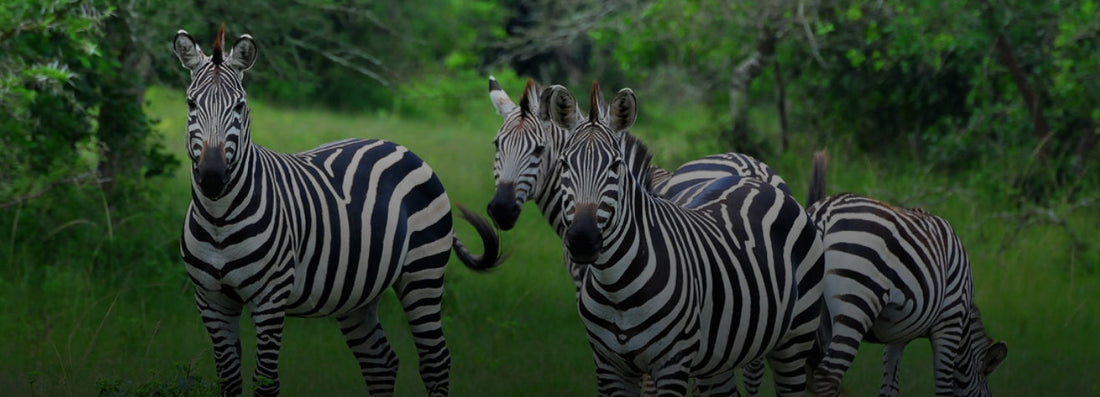
Lake Mburo National Park - Uganda’s Compact Gem
Share
Lake Mburo National Park: Uganda’s Compact Gem
Lake Mburo National Park may be Uganda’s smallest savanna park, but it is rich in biodiversity, scenic beauty, and cultural significance. Conveniently located near the highway linking Kampala to western Uganda, the park offers an accessible yet immersive safari experience.
Despite its size, wetlands cover 20% of the park’s surface, forming part of a 50km-long wetland system connected by swamps and five lakes within the park’s borders. These diverse ecosystems support an incredible variety of wildlife, birds, and aquatic species, making Lake Mburo a must-visit destination for nature lovers and birdwatchers.
Location: Nyabushozi County, Kiruhura District
Size: 370 km2
Altitude: 1,220m - 1,828m above sea level
A Park with a Resilient Past
Lake Mburo National Park has faced several challenges throughout its history, with wildlife being nearly wiped out multiple times due to:
- Attempts to eliminate tsetse flies
- Conversion of land into ranches
- Subsistence poaching
However, conservation efforts have restored the park, ensuring its survival and sustaining wildlife populations for future generations. Today, 20% of the park’s entrance fees are reinvested into local community projects, funding schools, health clinics, and infrastructure development to benefit neighboring communities.
A Haven for Wildlife and Birds
Lake Mburo’s mosaic of woodlands, savannas, lakes, and rocky outcrops provides a unique habitat for wildlife not commonly found in other Ugandan parks.
Key Wildlife Species:
- Zebras – Lake Mburo is one of Uganda’s best places to see zebras
- Impalas – The park boasts Uganda’s only population of impalas
- Elands – Africa’s largest antelope species is frequently spotted here
- Buffaloes, Defassa waterbucks, and reedbucks roam the open savanna
- Hippos and crocodiles dominate the lakeshores
- Leopards and hyenas lurk in the woodlands, though sightings are rare
- Bushpigs, warthogs, and topis add to the park’s diversity
A Landscape Shaped by Time
Unlike Uganda’s other savanna parks, Lake Mburo lacks elephants, allowing woodlands to thrive without being tamed. The park features:
Expansive savanna, dotted with rocky ridges and forested gorges in the west
Lush riparian woodlands along the lakes and rivers
Patches of papyrus swamp, providing a habitat for wetland species
This variety of landscapes creates breathtaking scenery and supports a thriving ecosystem of plants and animals.
A Birding Paradise
Lake Mburo is home to over 315 bird species, making it one of Uganda’s best birdwatching locations. The park is renowned for acacia-associated birds, with some of the best viewing areas found around Rwonyo.
Notable Bird Species:
- Mosque swallow
- Black-bellied bustard
- Bare-faced go-away bird
- Rüppell’s starling
- Southern ground hornbill
- Black-throated barbet
Whether exploring on foot, by boat, or on a game drive, Lake Mburo National Park offers an up-close and personal safari experience, where visitors can enjoy stunning wildlife encounters without the crowds.
Why Visit Lake Mburo National Park?
- Uganda’s most accessible savanna park, close to Kampala
- One of the best places to see zebras and impalas
- Incredible birdwatching opportunities with over 315 species
- Unique landscapes featuring wetlands, savanna, and woodlands
- Boat safaris, game drives, and guided walking safaris
A conservation success story, benefiting both wildlife and local communities
Despite its small size, Lake Mburo National Park is a true hidden gem, offering unforgettable wildlife encounters, stunning scenery, and a peaceful safari experience away from the crowds.
HOW TO GET TO THE PARK?
By Road
Lake Mburo National Park is the closest of all Uganda’s national parks to the capital city; located between Kampala and Mbarara City. The park is mainly accessed by road over a journey of approximately 228 kilometers (about 3 ½ hours).
From Kampala, the park can be accessed through two gates. If traveling from Kampala the first branch off on the left leads you to the Nshara Gate for a distance of about 5 kilometers. The second is at Sanga Trading Center for a distance of about 13 kilometers to the park’s Sanga Gate.
Both gates are only about 2 kilometers from the park’s headquarters at Rwonyo.
By Air
Whereas there aren’t any direct flights into the park, tourists can charter flights from either Entebbe International Airport or Kajjansi Airstrip to Mbarara airstrip through one of the domestic carriers. The flight is approximately 1 ½ hours. You will then transfer by road to the park for a short distance.
